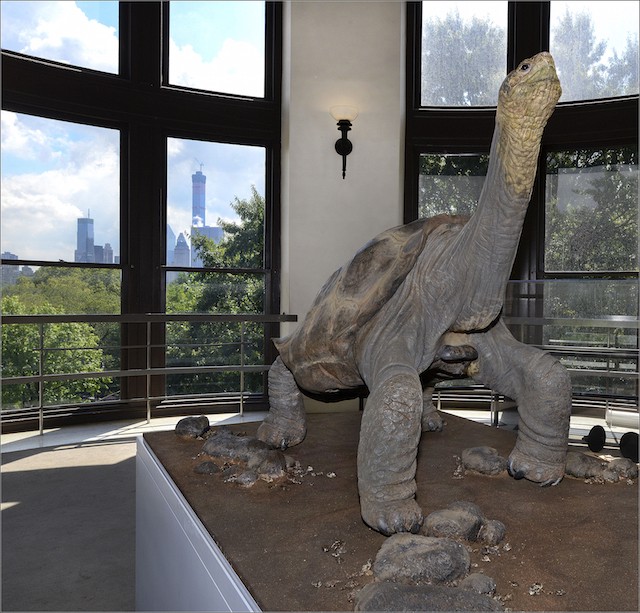Health Care Reform Reaches 'Improv' Phase
Health Care Reform Reaches ‘Improv’ Phase
The new health care:
Hospitals around the country are competing for newly-insured patients, and one way to increase patient satisfaction, they figure, might be to reduce the frustratingly long wait times in the ER. To that end, Northridge and its parent company Dignity Health started offering online appointments last summer; since then, more than 22,000 patients have reserved spots at emergency rooms in California, Arizona and Nevada.
Why stop here? Why not just rebuild the entire medical establishment from the emergency room out? One big door with the word “DOCTOR PLACE” above it, where anyone can walk in and be told quickly that it’s either too early or too late to do anything; either that they’re dying or they’re not. “Emergency rooms are there to take care of people who have emergencies,” some buzzkill doctor says, rudely. Every medical condition is an emergency when it’s yours! And every emergency room is a clinic when sickly health insurance plans still treat preventative care like a luxury.
New York City, September 21, 2014

★ The air through the windows was cooler in temperature than the suffocating, humid air indoors, but it was too damp to ease the discomfort. A few outriders from the climate-change march were lined up on one side of Broadway, opposite the people still lined up to consume the new obsolescence-making, resource-intensive high-end mobile phones. The light gray thickness in the atmosphere was not really misty; there was nothing mysterious or enchanting about its effects, just a faded Empire State Building looking down toward the markets of Grand Street. Sweltering though it was, the TV personality crossing Broadway back uptown wore a trim glen plaid suit buttoned, with a necktie, as he would be expected to. Only at day’s end did the gray end, the overcast breaking up into luminous pink clouds before the dark descended — no longer delayed, but seasonably punctual.
Prince, "FUNKNROLL"
Prince is releasing two full albums before 2015, both of which will be granted, by default, rigorous consideration by people who have at any point prior cared about Prince. But what on Earth does a teenager make of this? Will the youngest listeners hear this song and think, oh, Prince, dad, whatever? Or will they wonder, who is Prince, I’ve heard of him somewhere, and then maybe Google him? Does he just get to reappear, no questions asked, his legacy venerated unquestionably, his singles made hits in whatever order planned? Or does Prince have to plead a new case? Anyway: a pretty fun song.
The Eternal Afterlife of Lonesome George
by Brendan O’Connor

Lonesome George, likely the most famous tortoise in the world, was the last of his kind. He was the sole remaining member of his subspecies, Chelonoidis nigra abingdonii, from the northern Galápagos island of Pinta. He died two years ago. Last Thursday, his taxidermied corpse was unveiled at the American Museum of Natural History, where he will be on display until early January, at which point he will be moved to Ecuador. “I met George in Paris, walking down the Champs Elysees, in the rain,” Jan, a gray-haired travel and adventure writer, told me. “You can tell I make things up. The coffee is excellent!”
When Charles Darwin landed in 1835, there were at least fourteen different subspecies of giant Galápagos tortoises, accounting for some two hundred thousand individuals. Four of those subspecies have gone extinct, and just twenty thousand Galápagos tortoises remain. The challenge of preserving George’s individuality — while amplifying his symbolism — in death fell to Dr. Chris Raxworthy, the curator of the museum’s Herpetology Department, and the taxidermists from Wildlife Preservations, frequent collaborators with the museum on such projects. “What posture should a tortoise have?” Dr. Raxworthy asked at George’s unveiling. “Tortoises spend most of their lives asleep,” he continued. (Giant tortoises spend up to sixteen hours a day napping.) “That wouldn’t work.” Raxworthy and George Dante, founder of Wildlife Preservation, ultimately decided to pose George with his neck outstretched, as though reaching for a snack. Though it is two feet long, George’s neck, according to the New York Times, is only a size fourteen-and-a-half. He stands alone, as ever, in a glass case at the south-east corner of the museum, surrounded by tall windows. George looks inward, away from Central Park’s surrounding park’s greenery, into a hall filled with the bones of the other extinct creatures memorialized in the Lila Acheson Wallace Wing for Mammals and Their Extinct Relatives. There are green stains on his beak and chin.
For most of the twentieth century — until the discovery of George in 1972 — Chelonoidis nigra abingdonii was thought to have been extinct. However, in 2012, just months after George’s passing, researchers found seventeen tortoises with traces of C. abingdonii DNA on a secluded part of Isabela, another Galapagos island, which might indicate the continued, hidden existence of others of the subspecies. Repeated attempts to get George to breed with genetically similar females over the last forty years of his life were unsuccessful. “We don’t really know what the problem is,” Solanda Rea of the Charles Darwin Scientific Research Station told Reuters in 2001. “He just runs out of steam when trying to copulate. In theory he should be able to mate with the two females we have put with him, but I think that after so many years living alone, he just needs a female of his own sub-species.”

The approximately hundred-year-old tortoise was found dead by his keeper of nearly forty years, Fausto Llerena. “He was like a member of the family to me,” Llerena told the Times when Lonesome died. “To me, he was everything.” His death was unexpected: Giant tortoises often live to be two hundred years old; George’s exact age wasn’t known, but he was thought to be around one hundred years old. An autopsy showed signs of aging in his liver; it is no easy thing, being the last of one’s kind. Llerena, or Don Fausto, as Dante referred to him, is still in Ecuador, and, as far as Dante knows, he hasn’t seen any images of the final taxidermy. “He was in the back of our minds the whole time,” Dante said. “What he thinks, that’s the final word.” As a thank-you, Don Fausto, a woodworker, carved a sculpture of George and sent it to Dante, who showed it to me, cradling it gently in his hands. “This is my Oscar,” Dante said.
George arrived in New York in a state of miraculous preservation, the taxidermist George Dante recalled, having been completely frozen and remaining so over the course of his several-thousand-mile journey. After he thawed, measurements, casts, and molds were taken: what stands in the glass case in the Natural History museum is Lonesome’s tanned skin, stretched over a model. This is an older method of taxidermy, and difficult to get right with reptiles, whose hairless skin offers no room for error; mammal’s fur makes it possible to hide smaller mistakes.
Normally, Dante said, he does not taxidermy pets, because it’s too difficult to capture an animal’s individual personality to its owners and family’s satisfaction. “With George, this is the world’s pet,” Dante said. “The ambition to try to get George to look like George…” he trailed off, ending with a melancholy laugh. Dante and his employees at Wildlife Preservations pored over thousands of photographs and consulted closely with the people who knew George in life to get everything just right. “Not just as a taxidermist, but as an artist, this is the pinnacle of my career,” he said. “I don’t know where to go from here.” Dr. Arturo Izurieta, director of the Galapagos National Park, teared up as he thanked the museum for hosting and preserving George. “He’s not moving,” Izurieta said, “but he is moving our hearts.”
Brendan O’Connor is a reporter who lives off of the L train.
Photos copyright Charles Darwin Foundation/Allison Llerena and AMNH/R. Mickens
The Perils of Assuming That the Flying Rodent on Your Porch Is Dead
by Matthew J.X. Malady
People drop things on the Internet and run all the time. So we have to ask. In this edition, ESPN the Magazine Senior Editor Megan Greenwell tells us more about being attacked by a bat that seemed to be dead but was really alive like crazy.
Always nice to have someone waiting for you to come home at night. My someone is a bat who plays dead on my stairs, then flies at my face.
— Megan Greenwell (@megreenwell) August 28, 2014
Megan! So what happened here?
I live in Hartford, Connecticut, in a huge house built in 1920 and since subdivided into three apartments. It’s easily the most beautiful, charming apartment I’ve ever occupied, but there are occasional reminders that the place is old. Such as: I have to prop up one leg of every single thing I own, because the floors are quite slanted. Also: my heating bills are out of control, and last winter my furnace broke on a day when the high temperature was twenty degrees.
The latest reminder came when I returned home one night after taking a walk around our neighborhood with my friend and his dog. I began walking up the back stairs to my second-floor apartment, then stopped when I noticed a bat lying peacefully on the third step. Until this moment in my life, I had never seen a bat, but I didn’t have too much trouble identifying it: black, surprisingly furry, and pretty disgusting/terrifying/generally horrifying-looking even when ostensibly dead.
A dead bat on my stairs seemed like a problem, but not the kind of problem that I needed to deal with right then. So I decided to step over his creepy lifeless body (yes, I assume all horrifying creatures are men, because misandry), go up to my apartment, and either a) figure out a bat disposal system, or b) assume that my neighbors would leave the house earlier than I did the next morning and thus feel compelled to deal with it. (Let’s be honest: I was always going to choose b.)
As I began to step over the bat, I realized that he was not, in fact, dead. I realized this in the most dramatic way possible: The evil thing rose up, then frantically flew straight at my face. The next few seconds are essentially a blur, though I do remember some shrieking and sprinting. The most salient detail is: The bat did not bite me, so no rabies here.
Two weeks later, the bat and I repeated the same scene! This time I knew better than to assume he was dead, but for some reason I decided to try to step over him anyway, instead of just going around to the front stairs. Same shrieking, same sprinting, still rabies-free.
That seems like an especially mean trick, even for a bat.
It was later pointed out to me that assuming the bat was dead was an insane thing to do. I had been out of the house less than an hour, and a bat choosing my stairs as a very short-term hospice was much less likely than him just stopping there to chill out for a second. But I had never seen a bat before! How was I expected to know its creepy bat lifestyle?
My ex-boyfriend’s mother has a paralyzing fear of bats, which I always thought was weird; like being afraid of frogs or something. I owe her an apology for my silent judgment — she is absolutely right that they are the most horrifying creatures on earth.
Lesson learned (if any)?
Beyond the fact that bats are immortal? The most important lesson I learned is that your friends will not help you in dire situations. After my first bat run-in, I texted the friend I had just been with, in appropriately terrified all-caps. He grew up in the middle of the woods in western Pennsylvania, so I figured he’d have useful advice or, like, a special bat-killing device. (I later found out that he has experience killing bats with both a broom and a shoe.) He wrote back instantly, but not with an offer of help — instead, to confirm that a bat flying in my face was horrific. That’s it.
Just one more thing.
Once, a stranger emailed me to say he really enjoyed my Twitter feed but that I should not make “forever alone” jokes because they make me seem pathetic and desperate. I blocked him on Twitter, but now I think gleefully about how pathetic and desperate he is whenever I make a particularly good one. That said, I am taking applications for a combined boyfriend/bat-catcher position.
Matthew J.X. Malady is a writer and editor who was in New York but is now in Berkeley.
Incongruity Noted

What happens if you strip away most of the connective tissue in this New York Times article about sexual assault in Clinton Hill, Brooklyn?
1. By day, the handsome block of Irving Place that runs between Gates and Putnam Avenues in Brooklyn projects a vibrant wholesomeness. Women push strollers past the red-brick Mount Zion Tabernacle Church; young couples tote Trader Joe’s bags past a photo gallery; and watchful neighbors walk dogs in front of Public School 56.
2. It might seem incongruous, then, that this area would be the setting of two violent crimes: A 31-year-old woman told the police that she had been sexually assaulted twice on Aug. 31, the attacks coming one hour and a block apart in the near-dawn of Sunday morning.
3. Many residents of this section of Clinton Hill said the assaults had occurred amid a broader pattern of crime that taints these blocks on the weekends.
“You come out late at night, early in the morning, you see three, four prostitutes,” said Benny Allen, 30, a youth sports coach who grew up and still lives in the area. “Two years ago, I saw a man and a woman going at it right there on that sidewalk. I had to run them off.”
4. Standing in the doorways of multifamily buildings valued at $1 million to $3 million, residents told of their encounters with prostitutes and their clients.
We can keep going:
1. wholesomeness, strollers, Trader Joe’s
2. incongruous, sexually assaulted
3. broader pattern of crime, prostitutes, “run them off.”
4. $3 million, residents
The GENTRIFICATION STORY lens is so narrow and distorting that a report about sexual assault in a changing neighborhood becomes a story about a “broader pattern” of crime; just broad enough to include and implicate both the people perpetrating sexual assault and their victims. But no broader!
There is no mention of other crimes in the area, and there are no crime statistics. Just a single conflation: of criminalized, dangerous sex work with violent sex crimes. “Sex Worker,” it turns out, is as much an instantly unsympathetic news character as “Rival Gang Member” — a holdout from a time and place where sexual assault would have apparently been assessed as not incongruous at all.
Media Owned
“Marketers talk about ‘paid media’ (advertising they have to buy), ‘earned media’ (from press coverage to word-of-mouth buzz) and a growing category called “owned media” (their websites, blogs and social media feeds). The attraction of ‘owned media’, by definition, is that brands neither have to pay a media outlet for it nor earn it by convincing a reporter that the story is worth covering.”
New York City, September 18, 2014

★★★★ Denim and sunglasses everywhere. Cartons and backpacks and other baggage were lined up in the morning sun against the side wall of the Apple Store. It was abundantly bright, bright enough for some eyestrain, and fully qualified as warm. In the middle of the afternoon, a gray-infused mass of cloud wandered into the scene, cooling things for a while. Then it wandered off somewhere, and left Washington Square Park in strong sun again, for the drummers and the shirtless. A pigeon fluffed its feathers and contemplated a flock of fabric pigeon-sculptures feeding on invisible food. By evening, the Apple Store line was populated and stretched around the block. The sun went down in a cloudless west, without theatrics.
CORRECTION: Yesterday’s weather review was incorrectly listed with a four-star rating. The post has been updated with the correct rating of five stars. The Awl deeply regrets the error.
A Poem by Dorothea Lasky
by Mark Bibbins, Editor
The Static Nature of It All
I wake up in a house full of trash
And eat some cheese before I go out in the heat
Everything just doesn’t move
When you can’t make it to
Another day, another let me think about this
But you don’t call you don’t write you don’t care
You don’t want to see me
I want to see you so bad
But what is the trees that give shade
Even in my own voice I am calming
But what are the glowing yellow bunnies I kick around
You know what is going on
Still you stand there stand there
Even though I am the one from the other world
Who is in love with you
It’s hard for me even to defend you
To the legions of seers, crazy birds and bugs
That I call my “friends”
Even as they try to mix the potions for me
They can’t help but ask me why why
Why this one
And it’s hard for me to say anything
When you just sit there every day, so still and boring
Just the static nature of it
And I go looking looking for you in the streets
And I never find you
I never find you at all
ROME, Dorothea Lasky’s fourth collection of poems, has just been published by Liveright.
You will find more poems here. You may contact the editor at poems@theawl.com.
Man Persists
I first heard the words “My friends are gone and my hair is grey/I ache in the places where I used to play” when I was sixteen and, at that age, I assumed it was some sort of sorrowful commentary on the failings of the flesh. Now that I am older and all of those things are happening to me I realize that it is a rueful acknowledgment of how even the spaces which memory marks as the scenes of your happiest occasions are freighted with accumulations of sadness and regret. But also the thing about the body breaking down, because what doesn’t hurt at this point, right? Anyway, Leonard Norman Cohen, who wrote that song and so many others that have meant so much to me in my own moments of sadness and regret, turns 80 on Sunday. He has a new album out next week that people are saying terrific things about and you should for sure get it, but if you are unfamiliar with his work I have recently been re-immersing myself in Ten New Songs and I can strongly recommend it as the piece that puts him at the pinnacle of his ability to remind those of us prone to darkness that we are not the first ones to feel that way and since nothing’s going to make much of a difference anyway you might as well try to take your joys where you can, even in the places where the pain is the most pronounced.
